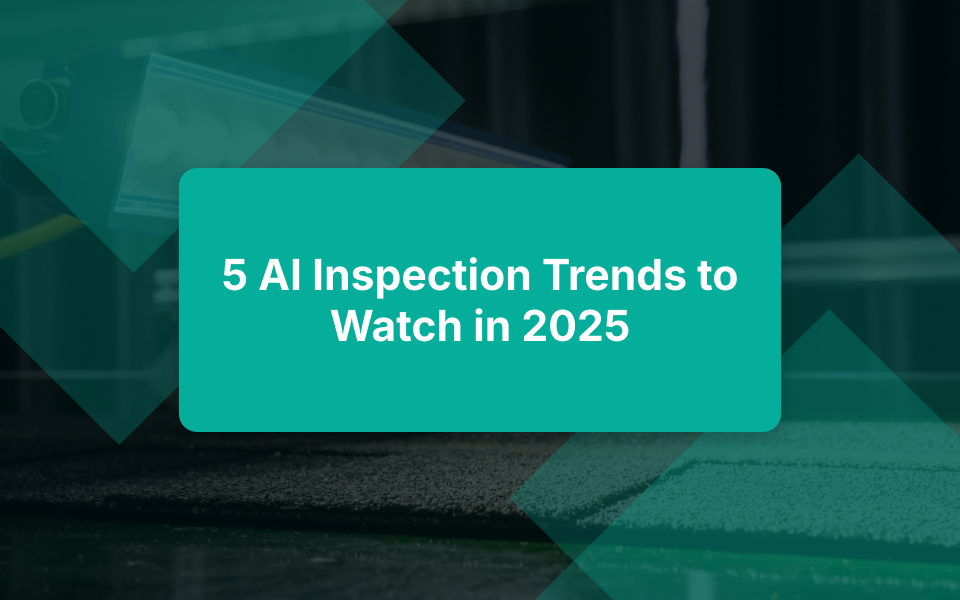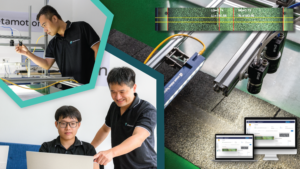As we advance into 2025, AI inspection systems are transforming rapidly. Whether you’re a manufacturer, quality control specialist, or simply interested in futuristic technology, staying informed about trends will be crucial. Understanding these trends can help you leverage AI for more effective quality control.
Trend 1: Revolutionizing Data Utilization in AI Inspection
1. Synthetic Data as the New Norm
2025 marks a transformative shift with synthetic data taking center stage in AI inspections. Unlike traditional methods requiring extensive and costly real-world data collection, synthetic data generation allows for rapid training and deployment. Platforms like Zetamotion’s Spectron™ utilize minimal input—often just a single scan—to create diverse, perfectly curated datasets. This approach accelerates onboarding for new product variants to under 24 hours while ensuring industry-leading accuracy rates of 99.99%. By eliminating the need for large-scale manual labeling, synthetic data significantly reduces costs, speeds up time-to-market, and paves the way for scalable AI-driven inspections across diverse manufacturing lines. Explore AI’s Impact in Manufacturing to understand how industry experts view these developments.
2. Semantic Teaching: A Smarter Approach to AI Inspection
AI in 2025 shifts from labor-intensive manual labeling to semantic teaching. This cutting-edge approach leverages AI’s ability to learn from context-rich synthetic datasets and operational cues rather than repetitive human annotations. Semantic teaching allows inspection systems to adapt to nuanced product variations and complex manufacturing environments dynamically. Zetamotion’s Spectron™ exemplifies this trend by integrating semantic algorithms that learn and refine in real time, enabling defect detection across thousands of product types without retraining. This method not only enhances accuracy but also aligns with the industry’s push toward smarter, more adaptive systems.
Trend 2: Integration with the Internet of Things (IoT)
1. Smart Factories
Smart factories are reshaping inspections, thanks to a network of connected devices. Smart sensors and machines now provide immediate insights into the production process, leading to precise and timely inspections. This shift means issues can be addressed as they arise, rather than waiting for end-of-line checks. The result is streamlined operations and enhanced product quality from the very beginning.
2. Data Collection
The volume of quality data being collected is astounding. Interconnected systems gather information from various production points, giving businesses access to a wealth of insights. This data can uncover trends and patterns that were previously invisible. With real-time data analysis, businesses can quickly address any quality concerns, ensuring consistent excellence in their output. For more on maximizing efficiency with AI-driven quality control, read this business perspective.
Trend 3: Sustainability in AI Inspection
1. Reducing Waste
In the push for sustainability, AI inspection systems play a crucial role in reducing waste. By detecting defects early, fewer faulty products reach consumers, saving resources and energy. This approach cuts costs and aligns with the growing demand for eco-friendly practices. Less waste means better operational efficiency and a smaller environmental footprint.
2. Eco-Friendly Solutions for Sustainable AI Inspection
The sustainability focus has led to developing energy-efficient AI models and tools designed to consume less power while maintaining high performance. Implementing greener technologies becomes a strategic advantage as businesses aim to meet environmental goals. This trend isn’t just about compliance; it’s about resonating with an environmentally conscious consumer base and achieving long-term success.
Trend 4: Improved User Interfaces and Experience
1. User-Friendly Dashboards
In 2024, expect more intuitive dashboards that transform complex data into easily digestible visuals. Operators no longer need to sift through endless spreadsheets. Simplified interfaces now highlight critical metrics at a glance, enhancing decision-making. With better visualization, even non-technical team members can contribute to quality control efforts effectively.
2. Mobile Access: The Future of Remote AI Inspection
Inspection’s future is mobile. Remote monitoring capabilities allow inspectors to manage quality operations from smartphones or tablets. This flexibility ensures production can be overseen anywhere, with real-time alerts and data updates keeping everyone in the loop. Remote access enhances responsiveness, enabling quicker decision-making.
Trend 5: Advanced Collaboration Tools
1. Cross-Functional Teams
Collaboration becomes critical in 2024, with AI inspection becoming a team effort. Cross-functional teams composed of AI specialists, engineers, and quality control personnel are appearing more frequently. This collaboration enhances creativity and problem-solving, allowing faster identification of issues and innovative solutions. For practical steps to get started with AI in quality control, consider this guide.
2. AI-Powered Tools
AI-powered tools are streamlining project management and task allocation during inspections. These systems not only assign tasks but adapt to real-time progress, optimizing workflows seamlessly. By integrating AI, teams can focus on enhancing quality and efficiency rather than getting bogged down by administrative tasks.
Conclusion
As we step into 2025, keeping an eye on these AI inspection system trends is essential. Machine learning advancements, particularly those enabling real-time learning, will extensively improve defect detection. Paired with smart IoT integrations, expect a wave of data-driven inspections refining efficiency.
Sustainability-focused methods will redefine quality control, while user-friendly interfaces and mobile access will empower operators to make quick, informed decisions. Lastly, the rise of advanced collaboration tools emphasizes that quality control is a team effort. More cross-functional collaboration, powered by AI, is bound to drive innovation.
Adapting to these trends isn’t just about keeping pace; it’s about seizing opportunities that will pave the way for future growth in manufacturing and inspection. Those prepared for these shifts will not only survive but thrive. For broader insights, explore the future of manufacturing.





